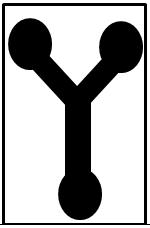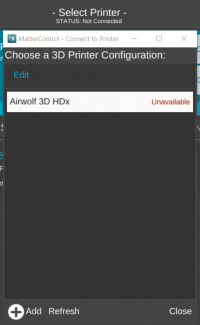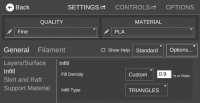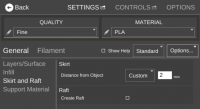Flow Cell Lab Activity
Introduction to Flow Cells
The purpose of this experiment was to see if distinguishing a flow cells mixing area would change the flow through the system. In a regular T- or Y-flow cell there is a laminar flow, a flow in which the two sides do not mix, that can be manipulated to give a non-laminar flow through the system. Using ten different manipulation of a typical flow cell, a way of having a non-laminar flow was experimented. Blue and yellow dyed RO water was used to determine the laminar/non-laminar flow of the flow cells by way of parastaltic flow pumps. These flow cells were created using Tinkercad to make a virtual object, 3D printed, and casted with silicon. To attach the parastaltic pumps to the flow cell, an acrylic plastic was drilled and tapped at the precise measurements of the flow cell created. Each flow cell was used and it was determined which resulted in laminar flow and which resulted in non-laminar flow as shown below.
Producing The Virtual Object
Tinkercad.com
Sujith
Prep for 3d Printing
A gcode file is required in order to print an object on the 3D printer. This file can be created by exporting one's Tinkercad object as an STL. The STL file can be imported into Matter Control.
The gcode file contains settings specific to the 3D printer being used in production of the flow cell. As a result, one must ensure that the proper printer, material, and settings are chosen before exportation of the final gcode.
3d Printing
Silicon Casting
After the 3D- printed cast has been made, now the actual flow cell can be created. We have used a 10:1 ratio of Slygard 184 (a silicon monomer) to curating agent, or about 5 grams Slygard 184 to 0.5 grams curating agent. After this is mixed thoroughly, we pour it into the cast and place it in a desiccator and place a vacuum on it to let the air bubbles come to the surface; once the vacuum is taken off, the bubbles will pop if left long enough.
After this, we can leave the cast to curate, or let the silicon harden and shape to the cast. There were a few ways this was done. Some put their cast into the oven, but due to the low melting temperature of the acrylic plastic, they started to melt, making them unable to be reused. Others, however, left theirs out over the time span of a week to harden. A table of how they have been done is listed below.
Flow Cell Construction
Flow Cell Experimentation
video/camera results
| Brad | Chris | Morgan | Tyler | Ian | Kayla | Matt | Priscilla | Desyi | Sujith |
| 1 | 2 |  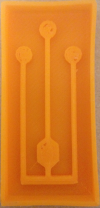 |
4 | 5 | 6 | 7 | 8 | 9 | 10 |
| 1 | 2 | 3 | 4 | 5 | 6 | 7 | 8 | 9 | 10 |
